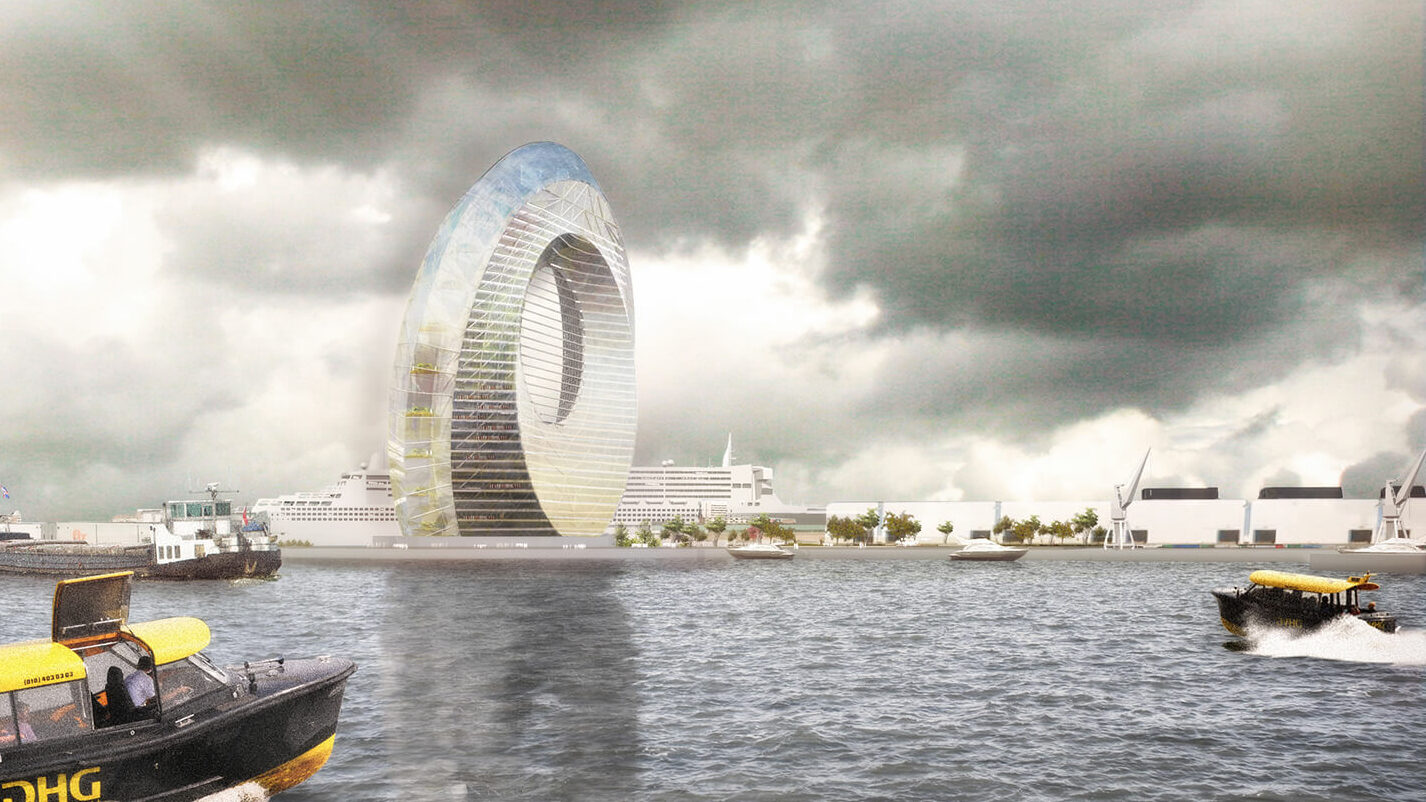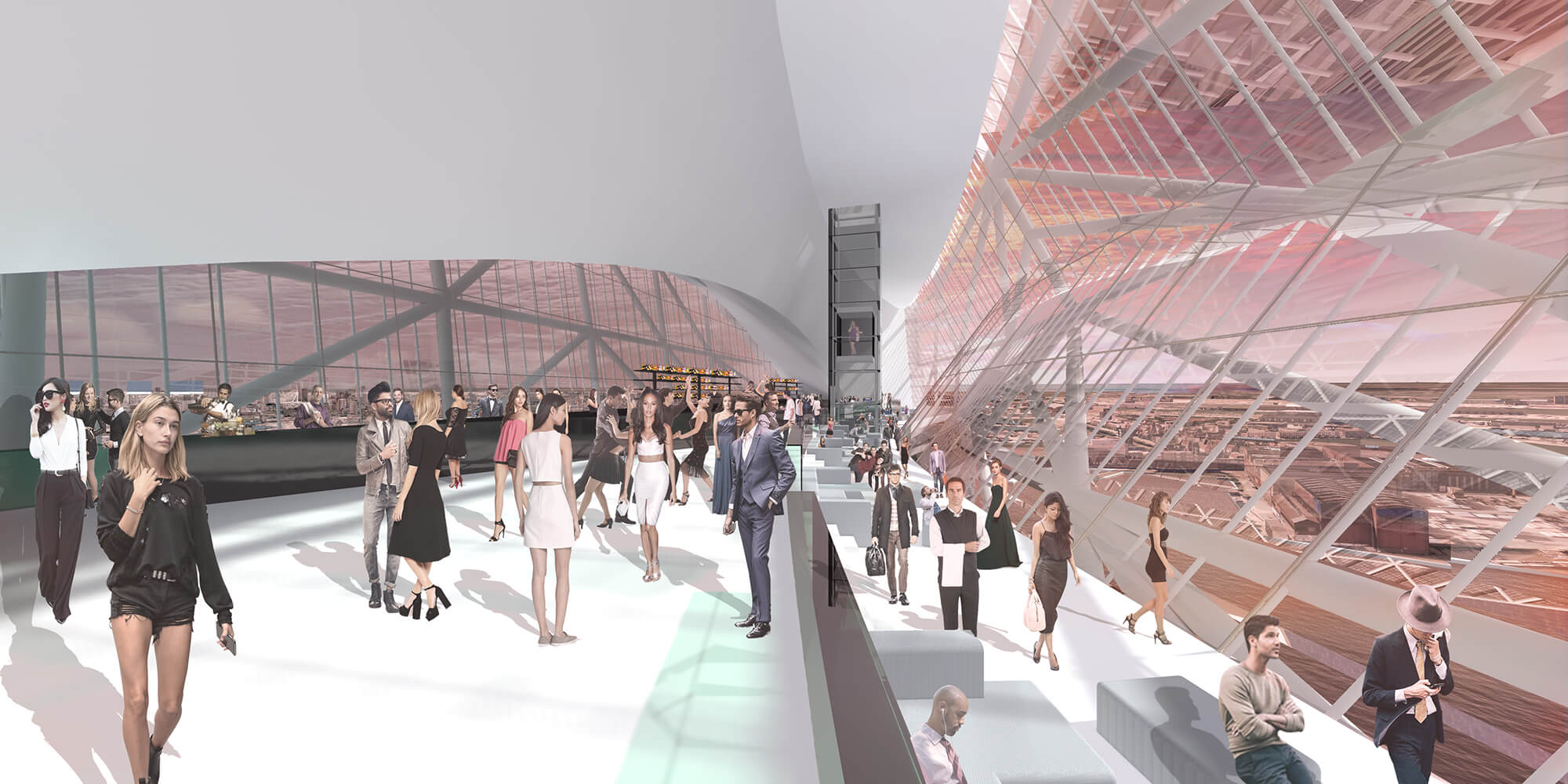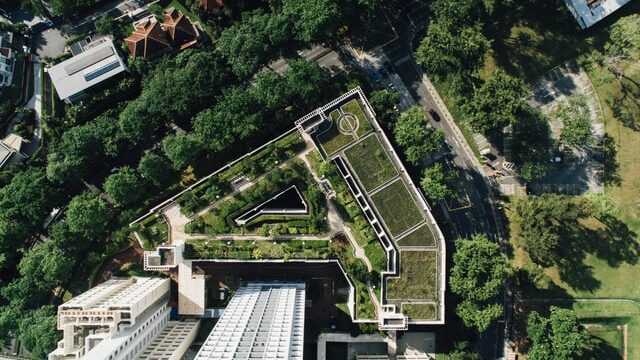De Windwheel: New Icon of the Netherlands

New architectural icon for Rotterdam? The “Dutch Windwheel“ is to be built in the port of Rotterdam in the coming years – a futuristic project.
The Dutch are daring to do something big again. They are building a new architectural icon in the port of Rotterdam: de Windwheel. The building harks back to the tradition of Dutch windmills. At the same time, it points the way to a new building future.
The planned de Windwheel building is not only intended to become an icon for sustainability. The approximately 175-meter-high, ring-shaped structure has the potential to become a new landmark and point of attraction in Rotterdam. Its unusual shape and capabilities also promise to attract worldwide attention. On the one hand, this will help tourism in Rotterdam. On the other hand, the architects responsible for de Windwheel are also heralding the transition to a clean tech economy.
Dutch tradition
Windmills have been emblematic of the Netherlands for centuries. The use of wind as a driving force has long been vital to the country. Now the typology of Dutch windmills faces a new beginning in Rotterdam. The de Windwheel project takes up their form. However, it equips them with the latest technology that uses wind and sun to generate energy. At the same time, the building uses natural elements for passive cooling and natural ventilation. De Windwheel promises to become a center of attraction in Rotterdam and a monument to architects Duzan Doepel and Eline Strijkers.
Skyscrapper
Halfpage

Billboard
Skyscrapper
Halfpage
The office DoepelStrijkers
The Dutch office DoepelStrijkers is so far primarily known for a project that has not yet been built. Back in 2015, de Windwheel found its way into the public eye. Still, the project is not the team’s only work. In 2007, Duzan Doepel and Eline Strijkers found each other in Rotterdam. They wanted to create interior design and architecture together, committed to sustainability. While Eline Strijkers brought experience in interior design, Duzan Doepel had other skills. To date, he had been striving to translate architectural research urban solutions. In office partnership, they saw the opportunity to translate research and practice into content-rich projects. In doing so, they were convinced that design can act as an agent for social renewal. Accordingly, they jointly pursued strategies and projects based on circular and inclusive economics.
Concentrated expertise in Rotterdam
The new windmill in Rotterdam consists of two interconnected rings. In the outer one, 36 publicly accessible cabins rotate. Similar to the London Eye, they form a tourist attraction. In the inner ring, on the other hand, there are also apartments, winter gardens, a hotel, restaurants and functionally open spaces. De Windwheel is thus not only a round, sustainable and healthy building. It is also equipped with the highest possible capacity for energy production. The latest technical solutions are used. Their development and realization is the work of a consortium of innovative experts. These include Arup, Royal BAM Group, Deltares, Dura Vermeer, ECN, Eneco, Evides, Siemens, SPIE and TNO. They all strive to increase the quality and sustainability of buildings through the use of climate architecture and advanced technology.
Sustainable mega-development – de Windwheel
De Windwheel in Rotterdam is already an icon of sustainability. Firstly, it is a vehicle for technical and technological innovations in a creative and figurative sense; secondly, it is a dynamic energy producer and, thirdly, it is a symbol of the dawn of a new future. In the past decades, urban development has received many impulses from bottom-up initiatives. Each of them has had a major direct and indirect impact on the social, ecological and economic performance of our cities. The de Windwheel project in Rotterdam, however, aims in the same direction, but as a mega-project. As such, it takes an unprecedented, radically different approach and development process. The project seeks solutions for how tourism and sustainable architecture can come together and create a positive contribution to the development of their urban environment.
De Windwheel has premises for various uses. (Visualization: Dutch Windwheel Corporation)

Medium Rectangle
Halfpage

De Windwheel: Sustainable Icon – Icon of Sustainability
The new Dutch giant windmill will thus become an attraction, enriching the architectural scene in Rotterdam. It will probably attract visitors from all over the world. They will be able to look out over Rotterdam and the surrounding area from the cabins rotating inside the building. From a great height, it’s not just the architecture at your feet that can be experienced. In good weather, Delft, The Hague and Dordrecht also appear on the horizon.
An innovative lighting concept and digital information in the cabins make the tour a special experience. The latter informs the rotators about what they see in the distance. But all kinds of sustainable and innovative technologies are also part of the attraction. Therein lies the power of the concept: sustainability contributes to the experience of de Windwheel on the one hand. On the other hand, it illustrates and rewrites the history of the Netherlands. A sustainable icon that is also an icon of sustainability.
Wind for the economy
The economic potential of the new windmill is great. The development process and the additional visitors bring new momentum to Rotterdam. This benefits the local economy and the labor market. De Windwheel is also a global symbol for sustainability and a showcase for the circular economy. The innovations used in the building are ready for the market. This makes the building a platform and an international showcase. Companies can also present their knowledge and innovations to the world here. The ideas of this project go back to the Windwheel Corporation; a consortium of companies from Rotterdam. They are working with leading companies and research institutes to master the innovative Windwheel program and project. They all see a clean, digital economy as the future. Perhaps that can already be experienced in 2025.
Rotterdam must deal with increasing competition from land and sea as a result of China’s Belt and Road Initiative. Read more about that here.












